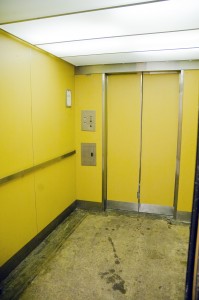Projects for further repair and renovation are still under way

Shane Rice
-Staff Writer-
In 2009 the Missouri Department of Higher Education (MDHE) made a report based on visits done to all state public colleges and universities. According to the MDHE, “the point of these visits and the report was to collect information on campus conditions and to develop a baseline on which future reviews would be based.”
Though the report did not single out one campus from another, it did make condition comments regarding STLCC- Meramec, Florissant Valley and Forest Park. The report stated, “The three campuses were in fair to excellent condition.”
Each college maintains a six-year plan where $5 million is invested annually among all the campuses for facility maintenance and repair. These funds are then used on projects that STLCC considers a priority.
“I believe we are, for the most part, ahead of the game, but each campus has their own issues,” said Willie Wright, building and grounds manager for Meramec. “I think we are doing very good with our maintenance and staying on top of any issues that arise, but as a district we need to work together to stay successful.”
Wright said that the plan this year includes repairs to older buildings and the parking lot at Meramec, as well as athletic restoration projects.
“We also plan on addressing the deteriorating dugout on the baseball field, renovations on the softball field, and laying new grass on the soccer field,” said Wright.
Some of the other projects that STLCC campuses face are elevator and roof repair, especially on at Florissant Valley, Forest Park and Meramec, which are nearing 40 years old.
“The elevators and lift units have become a reliability and life safety issue,” states the MDHE report.
Meramec has addressed some of the issues with the aging elevators by adding life jackets to arrest the fall in the event of an elevator failure.
“Codes for safety enforcement have changed in the last few years and STLCC has not had all the necessary resources to fix all units yet,” said Wright. “It always is a struggle because we are set on a six-year plan, and as issues arise it forces some priorities to change.”
Wright said roofs that leak and aged elevators are the main focus of the repair projects. “We are planning this year on renewing two of the older buildings’ roofs and also making sure all elevators are up to code,” said Wright.
Another issue is renovation on 45 science labs among the three older STLCC campuses, which were built in the 1960s. So far only 15 of these labs have been updated and the other 30 have issues that need to be addressed, including outdated equipment and energy inefficiency problems.
According to MDHE, these problems limit student learning and are not appropriate for modern scientific instruction.
“Several labs on campus have been updated, such as three biology labs and three chemistry labs,” said Wright. “The district does plan on updating more labs but we have to wait for funds to become available.”
George Wasson, vice president of academic affairs, said in order to determine the priorities of laboratory updates, the faculty and staff must be consulted to create a priority report.
“Based on these reports, we move forward with updating those that have the bigger needs, such as the chemistry and biology labs that were recently updated,” Wasson said.
Based on a study done by STLCC in 2009, more than 90 percent of the space in buildings on all campuses was utilized during enrollment peaks, with almost 12,000 students attending during spring and fall semesters.
“Growth is a good thing according to the district, but also poses a problem when dealing with these updates,” said Wright.
According to Wasson, there are several options that Meramec is considering to help with the capacity and growth issues.
“We are trying some different things, but it is a huge problem for us,” said Wasson. “We are going to start an accelerated hybrid program which will be an 8 week class on Saturday mornings, as well as introducing more evening classes.”
Another concern by the MDHE report is energy efficiency on the STLCC campuses.
“A few years ago, we went through a T.A. (Technical Assessment) study, which is a technical study to help determine our energy efficiency,” said Wright. “With the information gathered, we changed the lighting and pumps and also set up an energy management system to help us monitor our efficiency.”
According to Wright, funds have already been spent toward cosmetics and energy efficiency issues.
“We have redone the sidewalks; cooling towers; put in new boilers and already done some repairs to some of the other roofs on campus,” said Wright. “During the last ADA (American Disability Act) visit we went through, we did meet all requirements, but there is always room for improvement.”
Both Wright and Wasson agree that the report given by MDHE is accurate, but focuses on issues that are currently being addressed.
“We need to think about where we want to go in the future,” Wasson said. “We need to keep our campuses modern and be able to have facilities that serve students in a way that you expect and I think students deserve.”











